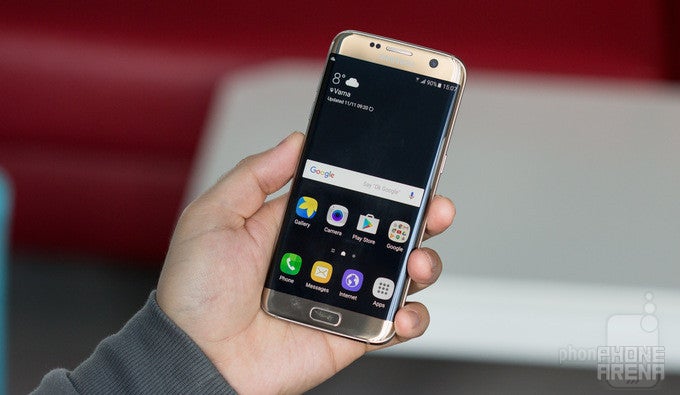Black wallpaper on an AMOLED display: how much battery does it save?

A few weeks ago, we posted a selection of wallpapers ideal for AMOLED displays. The images in question had one thing in common – they were predominantly black – and that's not only because of the striking contrast achieved by screens of that type. It is a known fact that on AMOLED screens, pixels that are totally black draw no power at all. That is why putting a solid black wallpaper on such a display results in lower power consumption, thus improved device battery life. But at the end of the day, how much power would this save? Surprisingly, not as much as you'd expect.
The experiment
To test how much battery life I could gain by switching to a black wallpaper, I gathered three phones with AMOLED displays that I had access to – the Samsung Galaxy S7 edge, the OnePlus 3, and the Nexus 6P. Then I set their screen brightness to a constant level – 200 nits when displaying a white image. Normally, a smartphone screen's brightness fluctuates below and above that point (if auto brightness is enabled, of course), but 200 nits is a reasonable average. Finally, I ensured that no background apps were interfering with my experiment.

Now it is time to make sense of all that data, and I'll try to do that as plainly and simply as possible. Using the figures above, I can calculate how much each phone's power consumption drops if I switch to a pure black wallpaper. If I divide the result by the phone's battery capacity, I'll know how much battery I'd be saving. Okay, I'll stop with the mumbo jumbo now and give you some actual numbers:
- On the Galaxy S7 edge: savings of about 1.2% battery charge per hour spent on the home/lock screen or 3.2% at best (if you switch from a completely white to a solid black wallpaper).
- On the OnePlus 3: savings of about 0.6% battery charge per hour spent on the home/lock screen or 4.5% at best.
- On the Nexus 6P: savings of about 1.4% battery charge per hour spent on the home/lock screen or 4.6% at best.
Not a lot, huh?
Conclusion
The power-saving potential of AMOLED displays is undeniable. It is one of the reasons why some power users go the extra mile and apply dark or black user interface themes to the AMOLED screens of their devices. It is why geeky phones like the OnePlus 3 have that option built right into their UIs. And it is also why some smartwatches use black extensively throughout their menus to compensate for their tiny batteries.
But as our data shows, simply changing your phone's wallpaper to a black image doesn't have that much of an effect on battery life. Yes, you will gain a few more minutes of screen-on time. Perhaps you'll gain more if your device has a smaller than average battery or if you keep your screen set on high brightness all the time. But on a typical high-end handset packing an AMOLED display, the difference would be small, if noticeable at all. That's not only because the power savings are underwhelming, as we measured, but also because most of the time we spend with our phones is spent within an app or a game.
So, are you surprised by the results? Have you experienced savings greater than what we measured? Or do you have any battery-saving tips to share? The comment section below is all yours!












Things that are NOT allowed: